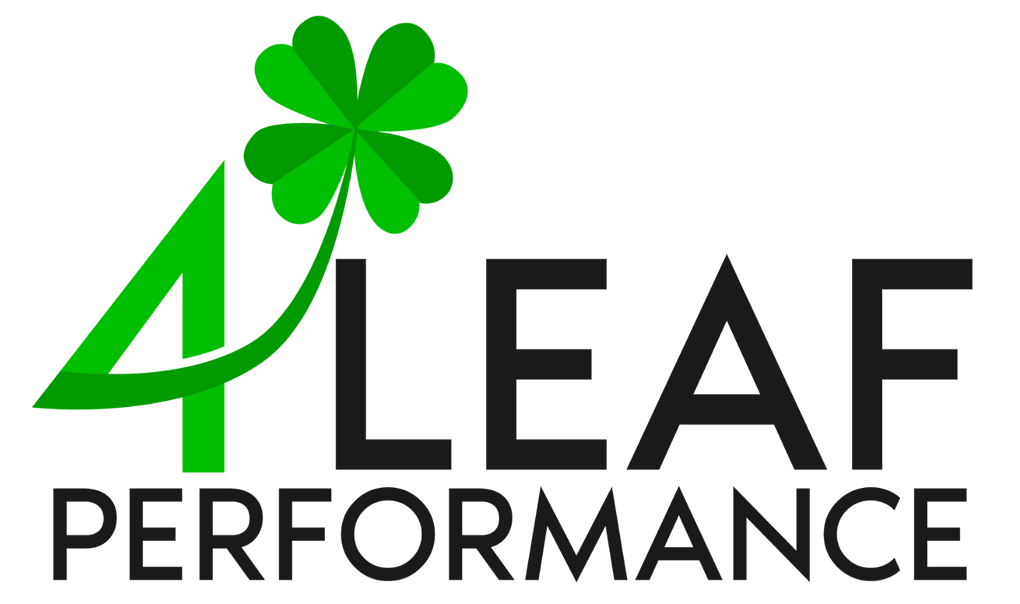Understanding behavior is essential for effective teamwork, and DISC styles offer a practical way to improve communication and collaboration. The DISC assessment categorizes behavior into four main styles: Dominance, Influencing, Steadiness, and Compliance. Each style reflects how individuals approach tasks, communicate with others, and respond to challenges.
But behavior isn’t one-dimensional. People naturally behave one way and adapt their behavior to meet different situations, especially in professional settings. This distinction between natural and adaptive DISC styles plays a key role in personal development and team dynamics. For leaders, knowing how to recognize these differences can improve team performance and communication. Understanding their DISC personality styles helps team members collaborate more effectively and meet workplace standards without sacrificing authenticity.
What Are DISC Styles? A Quick Refresher
DISC styles categorize behavior into four key personality types, each with unique strengths, communication preferences, and task approaches. These styles help teams understand how individuals naturally interact, make decisions, and respond to challenges.
Here’s a quick overview of the four DISC personality styles:
- Dominance (D): Results-driven, assertive, and confident. Individuals with this style focus on achieving goals, solving problems, and taking charge. They value efficiency and direct communication.
- Influencing (I): Outgoing, persuasive, and people-focused. Those with this style thrive on building relationships, inspiring others, and maintaining a positive environment. They communicate with enthusiasm and energy.
- Steadiness (S): Patient, reliable, and team-oriented. This style supports others, maintains consistency, and fosters collaboration. Individuals with this style value clear communication and predictable routines.
- Compliance (C): Analytical, detail-focused, and precise. People with this style excel at following processes, ensuring accuracy, and maintaining high standards. Their communication style is logical, structured, and fact-based.
Everyone has a mix of these traits, but most people lean more naturally toward one or two primary styles. Understanding these core tendencies helps leaders and team members improve how they work together, whether by adapting their disc communication styles or aligning their disc leadership styles with the needs of their teams.

Natural vs Adaptive DISC Styles: What’s the Difference?
DISC styles describe how people behave, but how someone acts in different situations can vary. This is where the distinction between natural and adaptive DISC styles comes in. Both play a key role in daily interactions, decision-making, and teamwork.
Natural DISC Style
Your natural DISC style reflects your core personality traits—the most natural and comfortable behaviors, especially in low-pressure situations. This style represents how you typically think, communicate, and respond when you’re relaxed or being yourself. For example, a team member with a natural Dominance (D) style naturally takes charge, makes quick decisions, and stays focused on results. These behaviors require little effort because they align with their instincts.
Adaptive DISC Style
Your adaptive DISC style shows how you adjust your behavior to meet external demands, such as workplace standards, team dynamics, or specific tasks. This style reflects the adjustments you make to fit different environments or achieve specific goals. For example, a naturally Dominant (D) leader might tone down their assertiveness and become more collaborative when working with a team that values consensus. These adjustments help maintain productivity and alignment while promoting better communication and teamwork.
Both styles are essential. Your natural style shapes your default behaviors, while your adaptive style allows you to navigate different situations and meet team needs. Recognizing these differences helps leaders improve their leadership styles by knowing when to rely on their natural strengths and when to adjust their approach. Similarly, team members who understand their DISC personality styles can communicate more effectively, adapt to changing environments, and collaborate more efficiently.
Why Understanding Both Matters in the Workplace
Understanding natural and adaptive DISC styles helps create stronger teams, improve communication, and drive productivity. Each style offers unique insights into how people behave in different situations, and recognizing both allows leaders and team members to collaborate more effectively. Here’s why this understanding is essential:
It Builds More Effective Communication
Natural and adaptive DISC communication styles influence how people share information and respond to others. Team members who understand their styles can express their ideas more clearly while adapting their tone, pace, and approach to match their audience. Leaders who recognize these differences can adjust their communication methods to ensure their messages resonate with each team member. This reduces misunderstandings and promotes more productive conversations.
It Strengthens Team Collaboration
Teams thrive when members understand each other’s strengths and working styles. By recognizing natural behaviors, teams can assign roles that align with each person’s strengths. At the same time, understanding adaptive styles helps teams collaborate more effectively during high-pressure situations or when adjusting to new standards. This flexibility allows teams to maintain performance while supporting each member’s growth.
It Reduces Conflict and Miscommunication
Many workplace conflicts stem from differences in communication styles and behavioral tendencies. Recognizing natural and adaptive DISC styles helps team members interpret each other’s actions more accurately. For example, a team member with a natural Dominance (D) style may appear too direct to someone with a Steadiness (S) style, but understanding this difference prevents misjudgments. Similarly, knowing when a colleague is adapting their behavior can create more empathy and reduce friction.
It Enhances Leadership Effectiveness
Leaders who understand natural and adaptive DISC leadership styles can effectively guide their teams. Leaders can provide the right level of support and motivation by recognizing when a team member is operating in their natural style versus adapting to meet standards. This approach helps leaders bring out the best in their teams while maintaining high performance.
It Drives Long-Term Success
A workplace where natural and adaptive DISC styles are understood fosters long-term success. Team members feel more confident in their roles, knowing they can leverage their natural strengths while adapting when needed. Leaders build stronger teams by aligning tasks with each member’s style, promoting collaboration, and creating an environment where everyone can thrive. This balance leads to sustained productivity, improved morale, and long-term business growth.

How to Identify Your Natural and Adaptive DISC Styles
Identifying your natural and adaptive DISC styles helps you understand how you naturally behave and adjust to different situations. This awareness improves communication, teamwork, and leadership. Here’s how to pinpoint both styles:
Take a DISC Personality Assessment
A DISC assessment is the most accurate way to identify your natural and adaptive styles. This tool measures your core tendencies and how you adjust your behavior to align with different environments. The results typically show your natural DISC personality styles and the adjustments you make in professional settings, which can help you fine-tune your DISC leadership and communication styles for better collaboration.
Observe How You Act in Different Situations
Pay attention to how you respond in different scenarios. Your natural style appears when you’re relaxed, while your adaptive style shows up when you’re adjusting to meet workplace standards or team dynamics. For example, if you’re naturally assertive but adopt a more collaborative approach during group projects, that shift reflects your adaptive style.
Ask for Feedback From Your Team
Colleagues and team leaders can provide valuable insights into your behavior in various situations. Ask for feedback on how you communicate, lead, and collaborate, especially when facing challenges. This feedback helps you identify patterns in your natural and adaptive behaviors, giving you a clearer picture of how you present yourself to others.
How Leaders Can Use DISC Styles for Better Team Performance
Effective leaders understand that their teams are made up of individuals with different strengths, communication preferences, and behavioral tendencies. By using DISC styles, leaders can improve how they communicate, motivate, and manage their teams. Here’s how:
Encourage Self-Awareness
Help team members understand their own DISC personality styles. When individuals recognize their natural tendencies and adaptive behaviors, they can better manage their reactions and collaborate more effectively. This self-awareness also leads to stronger relationships and reduces misunderstandings within the team.
Leverage Strengths for Role Alignment
Assign tasks and responsibilities that align with each team member’s natural strengths. For example, team members with a Dominance (D) style may thrive in leadership roles that require quick decision-making, while those with a Compliance (C) style may excel in roles that require attention to detail. Leaders can boost performance and job satisfaction by aligning roles with natural tendencies.
Adapt Communication Styles for Better Engagement
Use DISC communication styles to tailor your approach when interacting with different team members. For example, provide concise, results-focused communication for those with a Dominance (D) style, while offering collaborative, relationship-focused communication for individuals with an Influencing (I) style. Adjusting your communication style helps build stronger connections and ensures that messages are received as intended.
Balance the Team for Stronger Collaboration
Build teams with a mix of DISC personality styles to promote diverse perspectives and strengths. A well-balanced team is more creative, resilient, and adaptable. Ensure that both natural and adaptive styles are represented to create a dynamic environment where team members can rely on their strengths while adjusting to meet the needs of the group.
Actionable Tips for Team Members to Adapt Without Losing Authenticity
Adapting your behavior to meet different situations doesn’t mean losing your sense of self. Understanding your natural and adaptive DISC styles allows you to adjust to meet team standards while leveraging your core strengths. Here are practical ways to adapt without sacrificing authenticity:
Recognize Triggers That Shift Your Behavior
Identify situations that cause you to switch from natural to adaptive styles. For example, if you naturally prefer collaboration but become more task-focused under pressure, recognize when this shift happens. Awareness helps you balance flexibility with authenticity, improving your DISC communication styles and teamwork.
Practice Conscious Flexibility
Adapt your behavior without overcompensating. For example, if your natural style is Dominance (D), you may need to adjust your tone when collaborating with a team member who prefers Steadiness (S). Stay goal-focused, but communicate with patience and empathy. This approach strengthens relationships while maintaining productivity.
Seek Feedback to Refine Your Approach
Ask your team and leaders how your behavior impacts collaboration. For example, if you naturally lean toward detailed analysis (Compliance – C) but need to present information more concisely, feedback can help you adjust your DISC communication styles without compromising accuracy. Use this input to align your adaptive behaviors with team standards.
Develop Growth Strategies for Long-Term Success
Set personal development goals that align with both your natural and adaptive styles. For example, if you naturally enjoy building relationships (Influencing – I) but need to improve task focus, practice setting clear priorities while maintaining your engaging communication style. This balance allows you to meet team standards without losing your authentic approach.

Achieve Workplace Success by Understanding DISC Styles
Understanding natural and adaptive DISC styles helps leaders and team members work together more effectively. By recognizing these differences, leaders can adjust their DISC leadership styles to guide their teams more effectively, while team members can refine their DISC communication styles to collaborate more efficiently. This awareness leads to stronger relationships, clearer communication, and a more productive work environment.
If you want to improve team performance and enhance communication, explore 4 Leaf Performance’s leadership development services. Our coaching programs help leaders leverage DISC personality styles to build stronger teams, improve collaboration, and drive long-term success. Contact us today to unlock your team’s full potential.



